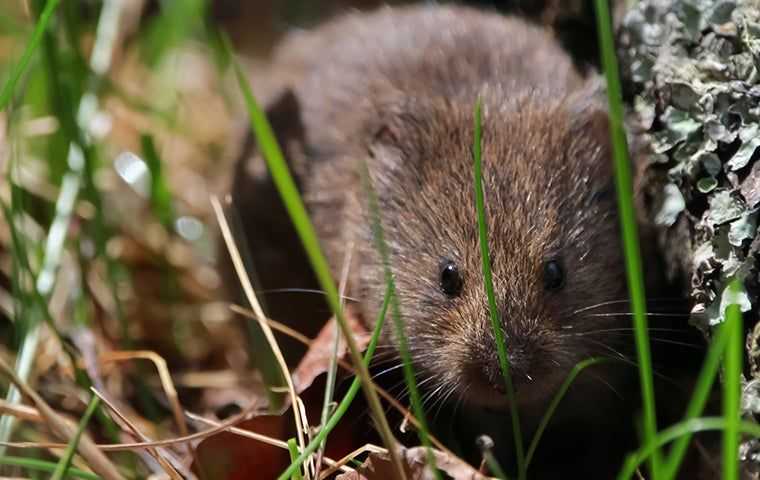Vole Pest Control Demystified: A Full Review of Problem Detection and Effective Therapy Approaches
As building proprietors and garden fanatics, the invasion of voles can be a consistent issue that needs a methodical approach for reliable administration. By recognizing the behavioral patterns of these elusive rats, one can acquire valuable understandings right into their practices and choices. From refined signs of infestation to the execution of targeted control actions, navigating the world of vole insect control demands a mix of knowledge and strategic action. In this detailed introduction, we will explore the subtleties of vole invasion discovery and look into the realm of reliable treatment techniques that can protect your spaces from these underground hassles.
Recognizing Vole Actions Patterns
Understanding the complex actions patterns of voles is vital for effectively executing bug control actions in domestic and agricultural setups. Voles, tiny rats that appear like mice yet with stouter bodies, are infamous for their rapid reproduction rates and starved appetites for vegetation. By delving into their behavior patterns, pest control experts can obtain important understandings into vole choices, susceptabilities, and behaviors.
Voles are primarily herbivores, feeding on a variety of plants, roots, origins, and bulbs. They are also prolific tunnelers, creating elaborate below ground burrow systems for nesting and foraging. By recognizing these routines, bug control specialists can tactically put traps and lure terminals along vole runways and entry factors, boosting the probability of successful obliteration.
In addition, expertise of vole habits patterns can help in establishing safety nets to deter future problems. By attending to factors that attract voles, such as thick greenery cover and easily obtainable food sources, building proprietors can make their facilities much less inviting to these devastating insects - vole lawn damage. To conclude, an extensive understanding of vole behavior is vital in developing sustainable and efficient parasite control techniques
Identifying Indicators of Vole Infestation
Effective vole pest control begins with without delay recognizing the indications of vole problem on residential properties. One of the most typical indications of vole existence is the visibility of surface runways. These paths are slim pathways through turf or plant life that voles create as they travel in between their burrows and food resources. Additionally, vole droppings are one more clear indication of problem. Vole droppings are small, cylindrical pellets that are frequently discovered along their paths or near their burrows.
In addition to runways and droppings, gnaw marks on tree bark and plants are additionally indicators of vole task. Voles have a behavior of gnawing on the bases of shrubs and trees, which can trigger damage and potentially kill the plants. The presence of burrow openings in the ground shows an energetic vole populace. Vole burrow entries are typically small and located in mulched or verdant areas.
Being watchful for these signs can aid homeowner spot vole infestations early and take ideal parasite control actions to stop more damage.
Implementing Targeted Control Measures
What details approaches can be utilized to efficiently execute targeted control steps for vole insect monitoring on buildings? Implementing targeted control actions for vole parasite monitoring needs a multi-faceted method that combines both prevention and obliteration methods. Among the key methods is habitat adjustment, which involves eliminating vole-friendly settings such as tall yard, weeds, and debris near structures. Setting up obstacles like hardware towel or crushed rock around garden beds and tree trunks can additionally assist deter voles.
Capturing is another reliable method for managing vole populaces. Live catches can be strategically put along vole paths or burrow entryways, baited with peanut butter or apple pieces. Once caught, voles must be humanely removed to a different place to avoid reinfestation.
Rodenticides can be used as a last resource for extreme infestations, but caution has to be worked out to prevent harm to non-target animals. It is vital to adhere to all safety and security standards and laws when making use of rodenticides for vole control.
All-natural and Green Treatments
The adoption of environmentally mindful methods can play a critical role in managing vole populaces without creating damage to the community. Eco-friendly and all-natural remedies offer a lasting technique to vole insect control, reducing using harmful chemicals and advertising biodiversity in the influenced locations.
One effective all-natural approach is using predator urine or killer decoys. Predators like foxes, serpents, and owls are the vole's natural adversaries. By tactically placing killer pee or decoys around the infested locations, voles may be deterred from resolving in those places.
Furthermore, planting vole-resistant plants can aid in minimizing vole damages. Plants such as daffodils, crown imperials, and Siberian squill are known to be uninviting to voles and can act as all-natural repellents.
Additionally, developing physical barriers like cable mesh or crushed rock around vulnerable plants can stop voles from accessing them. These barriers can assist protect gardens and landscapes without presenting any risk to the setting or various other non-target species. By integrating these environment-friendly and natural solutions, vole invasions can be handled successfully while maintaining environmental equilibrium.
Long-Term Avoidance Strategies
To sustainably deal with vole infestations over time, implementing proactive actions is critical for lasting avoidance methods. By decreasing thick vegetation, mulch, and mess around structures, you can make your home less appealing to voles.
Normal tracking of vole activity is crucial for very early detection of any kind of indications of invasion. Establishing up vole catches can assist in controlling their populace best site before it comes to be their website a full-on infestation. It is additionally crucial to seal off any kind of entrance indicate structures or structures to avoid voles from getting.

Conclusion
To conclude, understanding vole actions patterns, identifying indications of infestation, applying targeted control measures, using all-natural and environment-friendly solutions, and executing long-lasting avoidance strategies are important action in properly taking care of vole infestations. By being positive and taking the needed actions to address vole problems without delay, people can efficiently control and prevent vole infestations in their residential or commercial properties.
